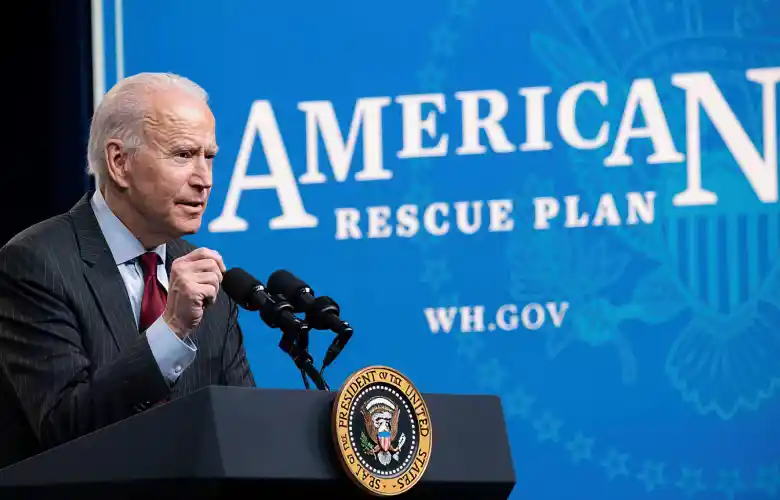How U.S. Nonprofits Can Apply for American Rescue Plan Act (ARPA) Healthcare Grants in 2025
A Historic Opportunity for Healthcare Nonprofits
The American Rescue Plan Act (ARPA), passed in 2021, injected billions into U.S. communities to recover from the COVID-19 pandemic. While much of the funding was immediate, many ARPA healthcare grants remain open in 2025—especially at the state and county level.
For nonprofits working in community health, behavioral health, or healthcare access, ARPA represents a rare, time-sensitive funding source that can accelerate your mission.

What ARPA Healthcare Grants Fund
ARPA healthcare allocations typically support :
1. Behavioral & Mental Health Services
- Expanding counseling, crisis response teams, and school-based programs.
2. Public Health Infrastructure
- Upgrading community health centers, telehealth equipment, and vaccination clinics.
3. Health Equity Initiatives
- Addressing disparities in underserved rural and urban areas.
4. Workforce Development
- Recruiting and retaining healthcare workers in shortage areas.
5. Community-Based Health Programs
- Outreach to high-risk populations, chronic disease prevention, and mobile health units.
Real-World Example
In 2024, Baltimore City Health Department used ARPA funds to expand mobile mental health clinics.
In 2022, GLFHC received $4.8 million in ARPA funding through the City of Lawrence allocation.
How Nonprofits Can Win ARPA Healthcare Grants :
Take the Greater Lawrence Family Health Center (GLFHC) in Massachusetts as an example:
- In 2022, GLFHC received $4.8 million in ARPA funding through the City of Lawrence.
- Their proposal focused on expanding behavioral health integration, telehealth upgrades, and hiring bilingual providers to meet the needs of a largely low-income, Spanish-speaking population.
- To secure the grant, they demonstrated:
- Data-Driven Justification : Cited a surge in post-pandemic behavioral health cases among underserved groups.
- Health Equity Focus : Framed their work as addressing disparities in immigrant and minority communities.
- Compliance Readiness : Showed they could handle Quarterly Performance Reporting and federal audit standards.
- Partnership Strength : Coordinated with local hospitals, schools, and nonprofits for delivery at multiple touchpoints.
Action Steps for Your Nonprofit
- Tie Your Project to Recovery Needs : Use local health data to prove post-COVID demand.
- Frame Equity Clearly : Highlight underserved or high-risk groups you will reach.
- Demonstrate Compliance Capacity : Be audit-ready with reporting systems in place.
- Build Strong Partnerships : Collect letters of support from hospitals, clinics, and local agencies.
- Tell Both the Data and Human Story : Numbers show impact, stories make it relatable.
If your nonprofit can combine these elements, you’ll be positioned—like GLFHC—to not just apply, but to win ARPA healthcare funding.
How to Apply for ARPA Healthcare Grants in 2025
1. Check State & County Websites
- ARPA funds are largely distributed locally—check your state’s ARPA portal and county funding announcements.
- Deadlines vary by location.
2. Identify Eligible Projects
- Make sure your proposal fits the specific call—many are tailored to a single priority like mental health or rural access.
3. Prepare a Strong Impact Narrative
- Tie your project directly to pandemic recovery needs.
- Use local health data to strengthen your case.
4. Document Collaboration
- Funders want partnerships—show letters of support from hospitals, clinics, and community groups.
5. Plan for Federal Reporting
- ARPA grants have strict Quarterly and Annual Performance Reports.
Timeline for ARPA Healthcare-Related Grant Funding (Federal Deadlines)
- Obligation Deadline (SLFRF Funds) : December 31, 2024 – state and local governments must commit ARPA SLFRF funds by this date.
- Spending Deadline (SLFRF Funds) : December 31, 2026 – complete expenditure of SLFRF funds required.
- HCBS Funding Expenditure Deadline (Section 9817 Medicaid Funds) : March 31, 2025 – states must fully expend ARPA HCBS-related funds.
- Example: Pennsylvania Provider Reimbursements : March 31, 2025 – deadline to spend; May 31, 2025 – final reimbursement submission.
Nonprofits should verify specific deadlines in their state or county, as they may vary and often hinge on when funds were obligated.
Why Pillar by SocialRoots.ai Gives You an Edge
Applying for ARPA healthcare grants isn’t just about the application—it’s about proving results every quarter.
With Pillar, your nonprofit can:
- Track health outcomes at the patient or community level.
- Automate federal reporting to meet ARPA compliance rules.
- Centralize collaboration data from multiple partners.
- Demonstrate equity impact through segmented analytics.
Funders know that data transparency reduces risk—and Pillar positions your nonprofit as a low-risk, high-impact partner.
Conclusion: Don’t Miss the Final ARPA Deadlines
By preparing a data-backed, equitable, and collaborative proposal—and leveraging tools like Pillar by SocialRoots.ai to track outcomes, manage reporting, and centralize partnership data—your nonprofit can maximize its chances of winning ARPA funding and expanding its healthcare mission while this historic opportunity lasts.
you can secure the resources to expand your healthcare mission while this historic opportunity lasts.